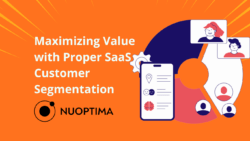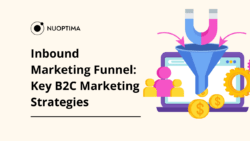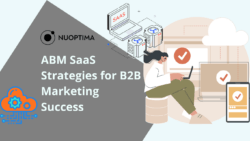Key Points
- SaaS buyer due diligence is a process involving the assessment of the overall performance of a SaaS company. It can help a buyer get a transparent view of business operations and gain confirmation of vital information.
- When a buyer conducts due diligence, they will consider many facets and metrics of the business, such as customer churn rate, source code review, number of website visitors, gross margin, COGS, and NPS.
- If you own a SaaS brand and would like assistance with scaling or are looking for professional advice, book a discovery call with NUOPTIMA full-stack growth agency today.
What is SaaS Buyer Due Diligence?
When a buyer is considering the purchase of a SaaS business, conducting due diligence is an essential step. Due diligence is a detailed and thorough process that involves reviewing the overall performance of a company. SaaS companies are obliged legally to disclose certain information before selling their business. This is to minimise the chance of financial fraud. It can be the lengthiest part of the sale process for larger acquisitions. Due diligence can help the buyer gain a clear understanding of how the SaaS business operates and provides them with confirmation of important information, such as customers, contracts, and company finances. This process usually starts when the letter of intent (LOI) has been signed.
Why Do Investors Like SaaS Businesses?
SaaS companies have numerous benefits that make them highly appealing to potential investors. SaaS benefits include:
- They are mobile-friendly and can be used absolutely anywhere.
- They update regularly.
- They can gather user data as well as easily trial new features.
- They have the capacity for predictable revenues.
- They generally have relatively low packaging, distribution, or overhead costs.
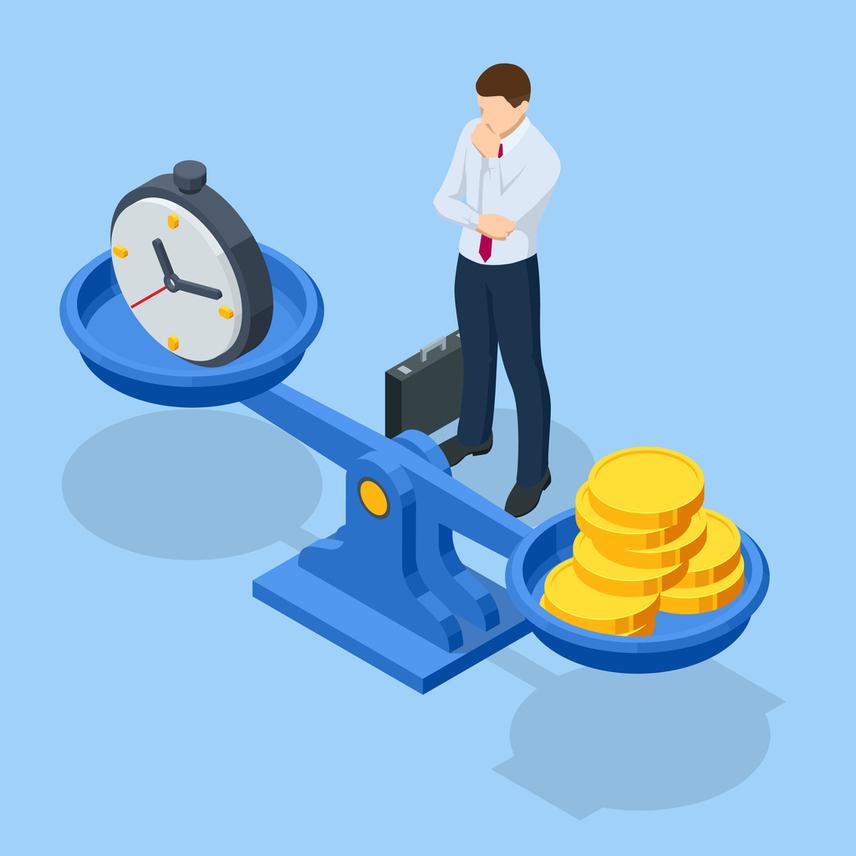
What Should a Seller Do to Prepare for Buyer Due Diligence?
While it is the buyer who will conduct due diligence, the seller has the capacity to make the process simpler. Sellers should ensure that all information, such as financial and sales data, is organised and helpful for their potential buyers to conduct their due diligence. Furthermore, sellers should ensure their balance sheet is in order, finances are current and updated, and prepare for possible questions buyers might ask. The importance of preparation cannot be understated, as even a tiny mistake can result in a failed business deal.
SaaS Buyer Due Diligence: A Checklist
This section of the article details numerous metrics and facets of a company that a prospective buyer reviews and includes in their due diligence process.
Customer Churn
The majority of SaaS brands have subscription models, so growing a brand is not just about gaining new customers but keeping them too. Therefore, customer churn — the percentage of customers that decided to cancel their subscriptions to a product — is highly important to a buyer. SaaS churn rates tend to be lower than most businesses with subscription services (another appealing benefit to a potential buyer). To determine the customer churn rate, the following formula must be followed:
The number of customers lost (churned customers) / the total number of customers a SaaS business had at a given time.
Revenue Churn
This is a metric that presents the amount of Monthly Recurring Revenue (MRR) that has been lost due to either customers demoting their subscriptions or because of churn rate.
Customer Support
Because most Saas companies have subscription plans, this puts pressure on customer support to maintain both growth and profitability. Because subscriptions mean that customers can choose monthly or yearly about whether they want to keep subscribed to a business, it is important that a brand is engaging and the customer’s number one choice. One way of doing this is to ensure that there is sufficient customer support. However, this is not just about ensuring there is an efficient help centre. It is also about assessing specific metrics, such as downgrade rates, renewal rates, customer satisfaction, and average response time. It is essential that SaaS brands focus as much on keeping their existing customers as they do on attracting new ones. If a current customer is not catered for, not enough is being done to decrease the churn rate.
Intellectual Property (IP) Assessment
One crucial component of due diligence is checking the IP and confirming it is watertight. It is not uncommon for a company owner to sell their business before securing their IP, which can be a big issue for the new owner. Therefore, a buyer must assess the software’s strength, including how it is patented and whether it will be protected legally from competing companies. Plus, it is vital to check that the company is not infringing on another company’s code. It must be substantiated whether there are any legal disputes regarding IP.
The buyer side should also investigate third-party dependencies, such as proprietary and open-source tools and external libraries, to ensure they are compliant with the relevant royalty and licensing requirements. Additionally, they should seek confirmation that all relevant parties have signed the IP agreement, i.e. technical staff, developers, system admin, and project managers. This decreases the risk of possible litigation.
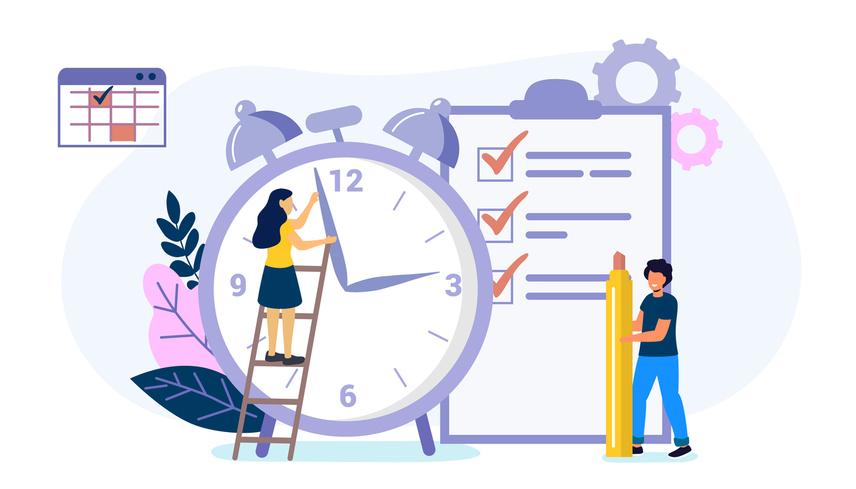
Source Code
Buyers will scrutinise the source code of a SaaS brand. Indeed, a well-run company should have well-documented, transparent, and annotated source code. This is because it assists with the successful transfer of the code. Source code usually influences the future revenue of a SaaS business, so buyers will not overlook this. Buyers must ensure that the code is not poorly written, plagiarised, or outdated.
Pricing Model
This is an absolutely critical metric for buyers. Before a customer subscribes to a product, they will consider the terms of payment and how it has been priced. Questions a buyer might ask include:
- Does the SaaS brand have a monthly or yearly subscription model? For the majority of new customers, a monthly subscription is preferred due to less investment needed upfront and less pressure for a long-term commitment.
- Does the business have a tiered pricing model, or does it charge a flat fee?
Visitors to the Website
Website visitors are an important marketing metric. It lets buyers view how many unique website visitors a brand receives each month. If the number is high, this indicates that the top-of-funnel content is reverberating with the target market. Top-of-funnel content is content that does not attempt to sell the audience on a service or product but instead helps and educates on regular pain points and queries. When considering website visitors, buyers will also look at the channels that bring in the majority of traffic, such as organic traffic, social media, paid search, and referral. More effort should be invested in the channels that are doing a better job bringing traffic to the brand.
Email Subscribers
This can be a highly indicative metric. Email subscribers are people who are on the mailing list and have generally done so through the brand’s marketing efforts. If there is a sizable mailing list, this displays there is a suitable market for a SaaS product. Buyers will assess various rates, including clickthrough, unsubscribe, and open rates. Why? Because these give great insights into how engaged subscribers are to the product. It also helps present a geographical picture of subscribers. This can inform buyers of valuable data such as currency, language, and fresh markets to support.
Gross Margin
Gross margin is the difference between the cost of goods sold (COGS) and total revenue. Therefore, it illustrates how much money is available for a company to pay operating costs and reinvest back into the company. Buyers like to analyse this metric as it provides a strong indication of how scalable a brand is and so can help with determining the valuation.
Essential Metrics that Buyers Assess
A buyer will also want to consider various vital metrics to see how they stack up as they can give invaluable insights into a business. These metrics include:
- Customer Acquisition Costs (CAC): This metric refers to the cost of acquiring a new customer. It generally involves the amount it costs to generate the lead as well as the cost of changing the lead into a customer. A simple rule of thumb is that if the CAC is too high, it is unlikely the business will be highly profitable. To gain a true insight, it is important to compare CAC with the following metric, customer lifetime value.
- Customer Lifetime Value (CLV): This is a measurement of how much revenue one customer is predicted to make over their subscription lifetime. It considers how long the customer will contribute to the bottom line and how much so. It also informs the buyer of how much money needs to be spent on acquiring each customer (CAC). Note: The CLV should always be bigger than CAC.
- Monthly Recurring Revenue (MRR): This metric is a normalised measurement of a company’s predictable revenue it intends to earn monthly. It helps buyers comprehend the average revenue generated through billing periods and pricing plans and lets them easily monitor revenue trends over time.
- Annual Recurring Revenue (ARR): As the name suggests, this is the recurring revenue generated by a company annually. Some SaaS companies generate income through monthly subscriptions, but others mainly focus on yearly contracts, making it a more transparent metric to determine the strength of the business.
- Cost of Goods Sold (COGS): This metric is the total expenditure connected to delivering a product or service to customers. This can include costs for web development, application hosting and monitoring, personnel training costs, and software licence fees. This is critical to understand what expenses are needed for the SaaS brand to run.
- Marketing Qualified Leads (MQLs): A lead is someone who has displayed interest in a product by providing information such as their company name, personal name, and job position. MQLS, therefore, are leads that match the required demographics of the ideal customer profile (ICL) and that show an interest in a product or service.
- Sales Qualified Leads (SQLs): SQLs are MQLs that have shown an interest in buying a product. Essentially they display this through certain actions, such as booking a sales call.
- Revenue Per Lead (RPL): This looks at the average revenue amount that each lead generated will bring to the overall revenue. By working out this metric in regards to individual salespeople, a buyer can gain invaluable insight into how efficient the sales team and its processes are and uncover which sales team members are better at closing particular sorts of customers.
- Average Selling Price (ASP): This determines the average starting MRR of brand new customers when they change to paying customers. This metric is key because it helps decide a suitable sales model for the company and can help predict if the CLV will decrease or increase.
- Average Revenue Per Account (ARPA): This SaaS sales metric works out the revenue brought to the table by a customer or account per month or year. It allows the buyer to look at a company’s generation of revenue and growth per unit, helping them determine which products are high revenue-generators and which are low.
- Net Promoter Score (NPS): This metric determines customer satisfaction. It involves asking one question to the customer which can be answered on a scale from one to 10: “How likely are you to recommend the SaaS product to a colleague or friend?” The results are tallied up, and the percentage of detractors is subtracted from the percentage of promoters. A positive score indicates a greater chance of a customer recommending the product.
- Daily Active Users (DAU): DAU is fairly self-explanatory and is simply a metric that displays how many people log in to use a SaaS product on a specific day. The key here is to determine who is defined as an active user (usually, it is the amount of people who logged in to the service).
- Monthly Active Users (MAU): Similar to DAU, this refers to the amount of people who have logged in to use a product in a specific month. These two metrics help find out engagement rates. The DAU and MAU ratio should be as close to 100% as possible, as this reflects satisfied and engaged customers as well as the increased likelihood of better retention rates.
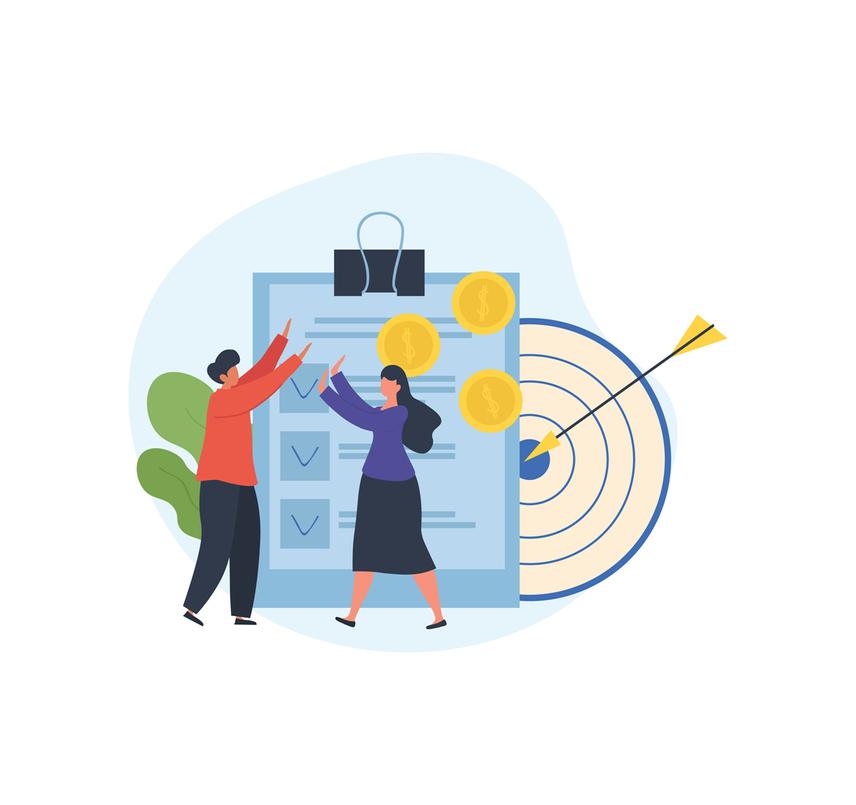
Other Factors that Buyers Consider
While there are potentially hundreds of questions that a buyer will have to ask about a brand, below we list several critical questions that the buyer is likely to ask when considering a SaaS brand:
- Who are the brand’s shareholders, and how much of the business does each shareholder own? Do any directors have a stake financially?
- What do the annual, quarterly, and monthly financial statements say about the company?
- Who is the biggest competitor to the brand, and how large is their market?
- What insurance does the SaaS business have?
- Is there any debt, and if so, when does it have to be paid by?
- How many members of staff will stay after the brand is sold?
- What is the brand’s refund policy, and has there been unusually high levels of these?
- What reputation does the company have in the market?
- Does the company have any essential subcontractors, and if so, who?
- Are the employment and exclusivity agreements in order?
Gain deeper insights into ROI strategies by listening to the Nuoptima SaaS Podcast featuring Deepak Prabhakara from BoxyHQ.
The Takeaway
Whether you are a buyer or seller of a SaaS brand, following our buyer due diligence checklist will give you a good idea of what the selling process entails and what metrics and factors should be focused on. Due diligence can be a lengthy and complex process, but its importance cannot be understated. If you are interested in scaling or selling a SaaS brand and would like assistance or advice, book a free consultation call with NUOPTIMA growth experts today.

